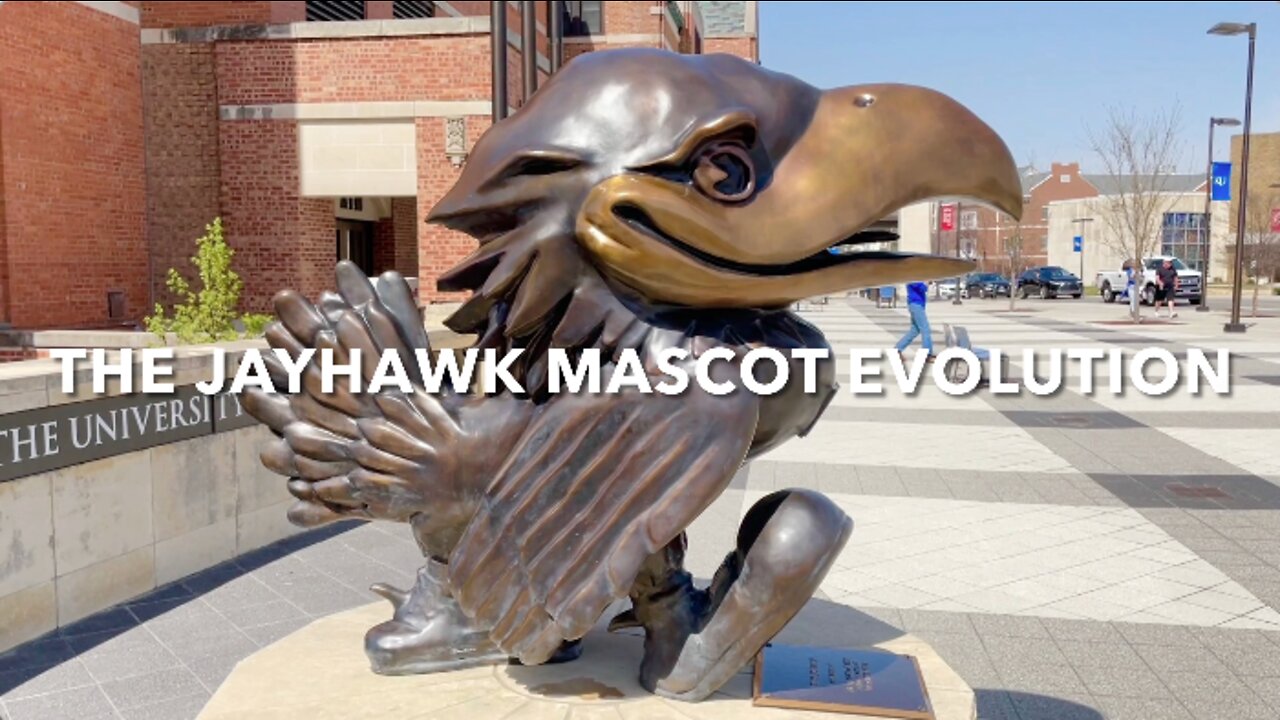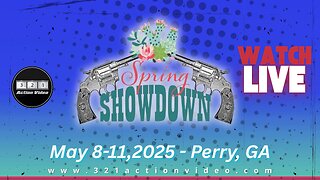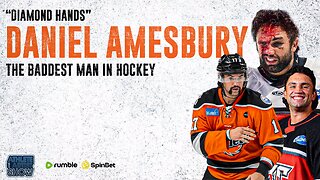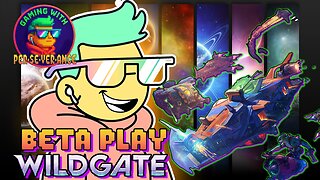Premium Only Content

The Jayhawk Mascot Evolution
A quick video history of the evolution of the Kansas Jayhawk mascot, as displayed in bronze statues outside the Kansas Union building on the University of Kansas campus in Lawrence, Kansas.
From: https://kuinfo.ku.edu/whats-history-jayhawk
Question: WHAT'S THE HISTORY OF THE JAYHAWK?
Answer: The term "Jayhawk" was originally a term used by pro-slavery Kansans to describe Free State supporters during the "Bleeding Kansas" period in the 1850s. Over time, "Jayhawk" lost its war-like connotations and Kansans came to embrace the title as a term of endearment.
The bird itself is mythical, and the name probably comes from two birds common to the area, the sparrow hawk and the bluejay. The Jayhawk became the mascot for the University (before that it was the Bulldog, among others), when Eureka, Kansas student Henry Maloy created the first cartoon in 1912. There have been 7 different Jayhawks over the years, and the current "smiling" incarnation was created in 1946.
Evolution of Jayhawk:
Mascots are believed to bring good luck, especially to athletic teams. Just about every college and university claims a mascot. The University of Kansas is home to the Jayhawk, a mythical bird with a fascinating history.
The origin of the Jayhawk is rooted in the historic struggles of Kansas settlers. The term "Jayhawk" was probably coined around 1848. Accounts of its use appeared from Illinois to Texas and in that year, a party of pioneers crossing what is now Nebraska, called themselves "The Jayhawkers of '49". The name combines two birds--the blue jay, a noisy, quarrelsome thing known to rob other nests, and the sparrow hawk, a quiet, stealthy hunter. The message here: Don't turn your back on this bird.
During the 1850's, the Kansas Territory was filled with such Jayhawks. The area was a battleground between those wanting a state in which slavery would be legal and abolitionists committed to a free state. The opposing factions looted, sacked, rustled cattle, stole horses, and otherwise attacked each other's settlements. For a time, ruffians on both sides were called Jayhawkers. But the name stuck to the 'free staters' when Kansas was admitted as a free state in 1861. Lawrence, where KU would be founded, was a Free State stronghold.
During the Civil War, the Jayhawk's ruffian image gave way to patriotic symbol. Kansas Governor Charles Robinson raised a regiment called the Independent Mounted Kansas Jayhawks. By war's end, Jayhawks were synonymous with the impassioned people who made Kansas a Free State. In 1886, the Jayhawk appeared in a cheer--the famous Rock Chalk Chant. And when KU football players first took the field in 1890, it seemed only natural to call them Jayhawkers.
How do you draw a Jayhawk? For years, that question stumped fans. Henry Maloy, a cartoonist for the student newspaper, drew a memorable version of the Jayhawk in 1912. He gave it shoes. Why? For kicking opponents, of course.
In 1920, a more somber bird, perched on a KU monogram, came into use. In 1923, Jimmy O'Bryon and George Hollingbery designed a duck-like Jayhawk. Around 1929, Forrest O. Calvin drew a grim-faced bird sporting talons that could maim. In 1941, Gene "Yogi" Williams opened the Jayhawk's eyes and beak, giving it a contentious appearance.
It is Harold D. Sandy's 1946 design of a smiling Jayhawk that survives. The design was copyrighted in 1947. In 2005 the Jayhawk was reintroduced with the new KU Trajan font.
Today you'll find several Jayhawks on the Lawrence campus. A piece of birdlike iconography on Dyche Hall, erected in 1901, looks suspiciously like a Jayhawk. In front of Strong Hall perches a large Jayhawk, a statue with sleek, modern lines, gift of the Class of 1956. Another, a striding, feathered bronze bird, greets visitors to the Adams Alumni Center.
If you enjoy this video, please click the "plus" button to give me a "Rumble". And comment if you like, and share as well. And you can always subscribe to my channel as well. I'm always coming out with new content on a weekly basis. Have a great day!
-
 LIVE
LIVE
TheSaltyCracker
1 hour agoCocaineGate ReeEEEStream 05-11-25
22,962 watching -
 28:54
28:54
Afshin Rattansi's Going Underground
15 hours agoProf. John Mearsheimer: Israel OWNS the Trump Administration, Israel is a LIABILITY for the US
1.15K14 -
 1:05:58
1:05:58
Sarah Westall
2 hours agoNeocon Revival: Why War Hawks Like Nuland and Bolton Never Go Away w/ Joe Hoft
2.89K6 -
 3:11:14
3:11:14
Barry Cunningham
6 hours agoBREAKING NEWS: PRESIDENT TRUMP GETS DEAL DONE WITH CHINA!
41.2K25 -
 2:34:55
2:34:55
Nerdrotic
4 hours ago $1.44 earnedExpeditions into the Ancient Jungle w/ Luke Caverns | Forbidden Frontier 101
11.8K3 -
 0:50
0:50
JULIE GREEN MINISTRIES
13 hours agoHappy Mother's Day
77.9K151 -
 16:11
16:11
CryptoWendyO
8 hours ago $7.80 earnedAMAZING REASON CRYPTO TURNED BULLISH! BITCOIN $110,000 SOON!
55.8K37 -
 6:15:56
6:15:56
Total Horse Channel
1 day ago2025 Spring Showdown | May 11th | Barrel Racing Finals
81.8K3 -
 54:39
54:39
Athlete & Artist Show
12 hours ago $4.28 earnedThe Baddest Man In Hockey Hasn't Had A Goal Against In 6 MONTHS!
82.9K4 -
 7:25:12
7:25:12
Midnight In The Mountains
13 hours agoGaming w/ PER·SE·VER·ANCE 🕹 🔥🎮 WILDGATE Beta Madness! |
92.3K7